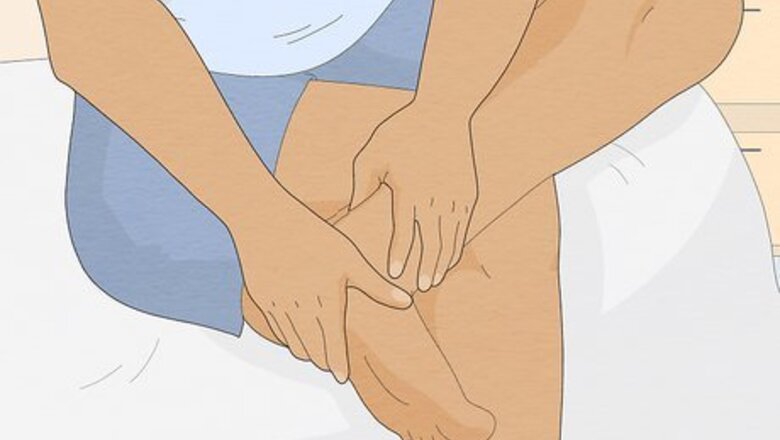
views
Give yourself a foot massage.
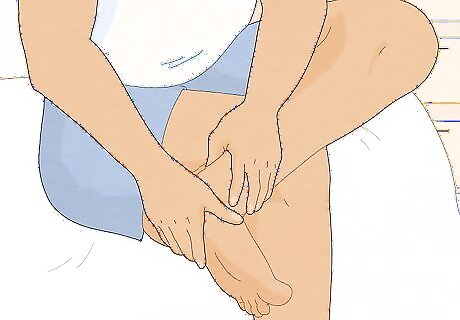
Rubbing your feet may help relieve the sensations faster. Gently massage the soles of your feet with your hands. It may feel a little strange at first as you regain feeling, but keep rubbing your foot until the tingling dies down. The more you move and work your foot muscles, the faster they’ll return back to normal. Alternatively, you can also set a tennis ball on the floor and roll it underneath the sole of your foot. Use your favorite lotions or essential oils during your massage for some aromatherapy.
Shake your foot.
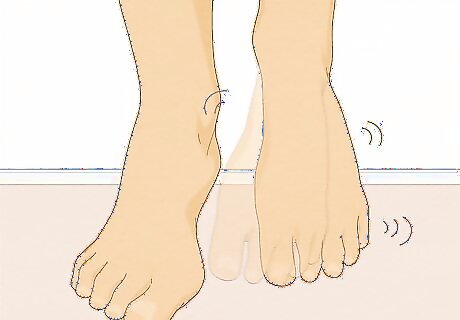
Moving your foot around improves your circulation. Since you cut off the blood flow to your foot, wiggle your toes and shake your leg. It might feel a little uncomfortable at first if you have a pins and needles sensation, but it’ll pass within a minute or two as your circulation returns to normal. After your foot feels fine again, make sure you don’t go back into the position that put it to sleep in the first place.
Change the position of your legs.

Sitting in the same position can cause pins and needles in your foot. If you keep your legs crossed or in weird positions, you may cut off the nerves that make your limb fall asleep. Move your legs around so they aren’t elevated and just relax until your foot wakes up again. You may feel a slight prickly sensation in your foot as soon as you move around. It’s completely normal, and only signals that your circulation is returning.
Take pressure off of your foot.
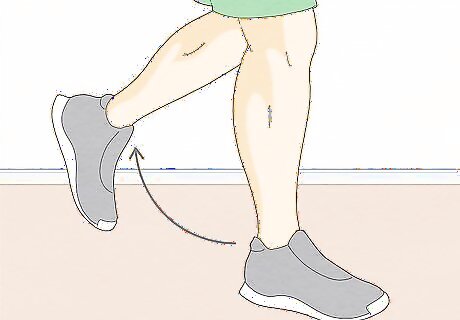
Relieving compressed nerves in your foot helps with any tingling. Sitting on top of your foot cuts off the nerves and also makes it fall “asleep,” kind of like a kink in a hose. Move your foot and keep it relaxed so your nerves wake up. You should feel back to normal again within a couple of minutes.
Stand up.
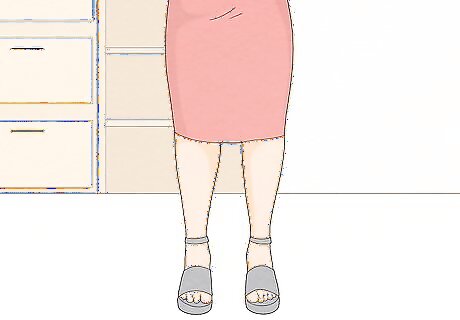
Getting up and walking around gets your blood flowing. Carefully stand up and try walking around for a little while. You may feel a tingling feeling with every step on your “asleep” foot, but that’s a sign that your circulation is coming back and it won’t last very long. Sometimes, you may temporarily lose feeling in your foot and won’t be able to support your weight. Stand on your foot that’s “awake” at first before stepping down with the one that’s “asleep.”
Wear shoes that fit properly.

Try a different pair of shoes if your feet fall asleep while you’re working out. Start by loosening your shoelaces and giving your foot some room to breathe to see if that relieves the sensation. If not, your shoe might be too small in other places. Wear shoes that grip your heel tightly, support your arches, and give you enough room to wiggle your toes easily. Take off your shoes when you can so your feet aren’t as constricted.
Exercise regularly.

Working out improves leg circulation so you’re less likely to feel numb. Sometimes, the numbness in your legs is caused by plaque build-up in your arteries that limits your circulation. Since exercise prevents build-up, helps condition your muscles, and improves how your muscles absorb oxygen, your legs are less likely to feel numb. Do your best to get about 150 minutes of vigorous exercise throughout the week. Even if you don’t have a big chunk of time during the day, try splitting your exercises up. For example, you can go for a short walk in the morning and do some weightlifting later in the afternoon.
Sleep on your back.

Lying on your back can help if your foot falls asleep at night. Since your body weight could apply pressure on your legs and feet, they may stay “asleep” when you wake up. Try sleeping on your back throughout the night so your body maintains regular circulation.
Stop smoking.
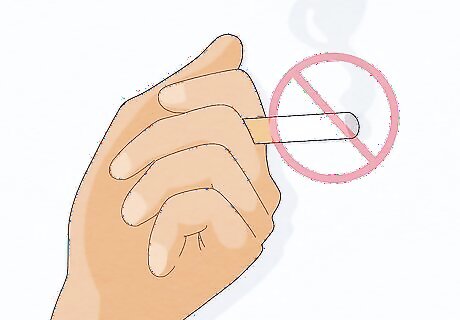
Smoking constricts your blood vessels and can lead to numbness. Do your best to stop using all tobacco products since they contribute to build-up in your arteries, which reduces blood flow to your feet. If you need to, use a smoking cessation product, such as nicotine gum or a patch, to help make quitting easier for you. Stopping smoking can help with numbness caused by diabetes and peripheral artery disease.
See a doctor or podiatrist.

Long-term tingling and numbness may be a more serious condition. If your feet get numb for no obvious reason and it occurs suddenly, it’s time to contact a doctor. Mention your symptoms to your doctor and let them know how frequently you get the sensations. Your doctor may have you switch medications if it’s caused by a side effect, or prescribe you medicines that help with nerve pain. If you continue having foot problems, then they may recommend a podiatrist to help locate the cause. A podiatrist can prescribe custom shoes or inserts that protect your feet and keep them more comfortable.














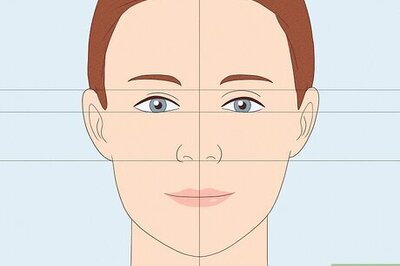
Comments
0 comment